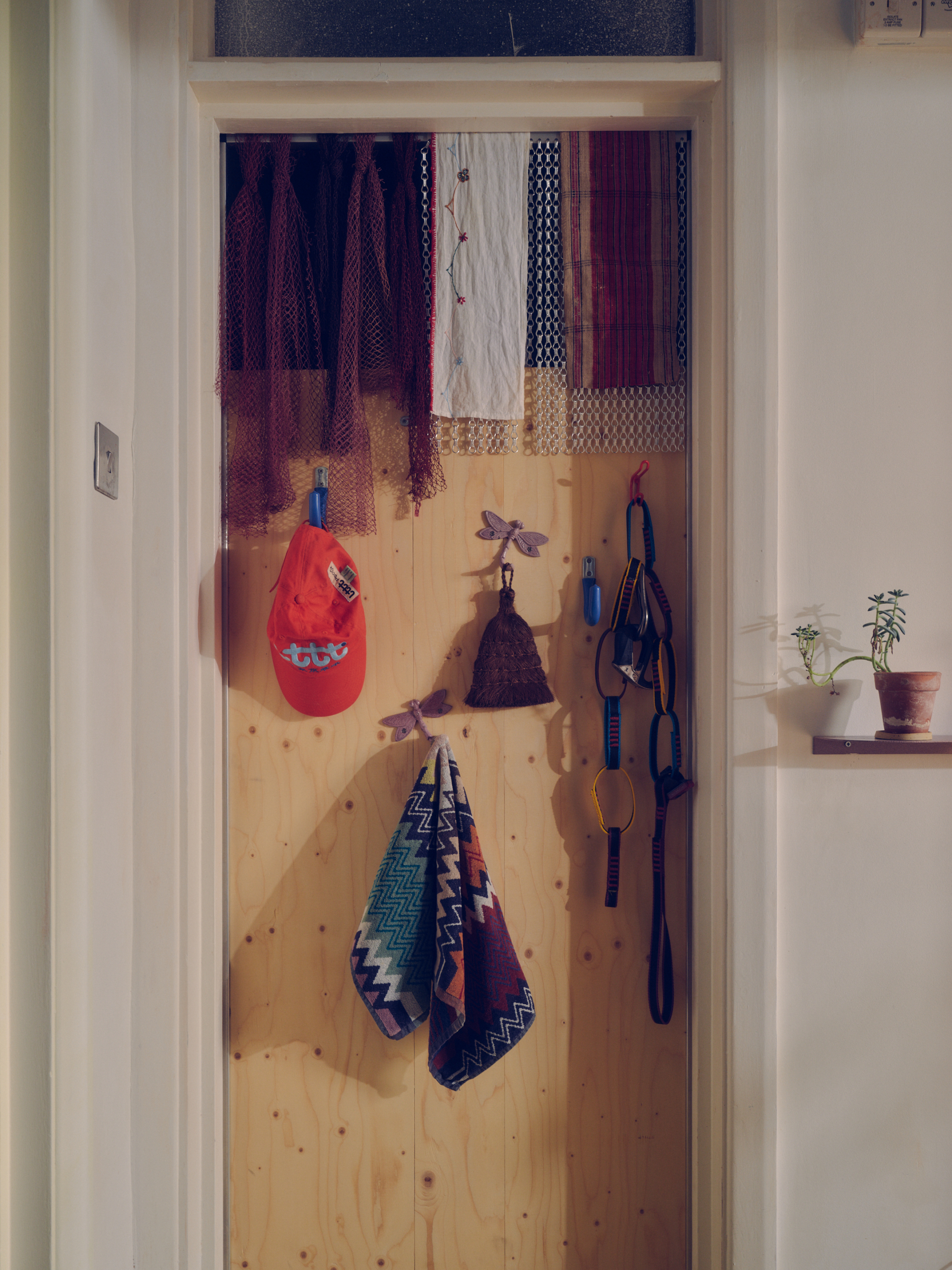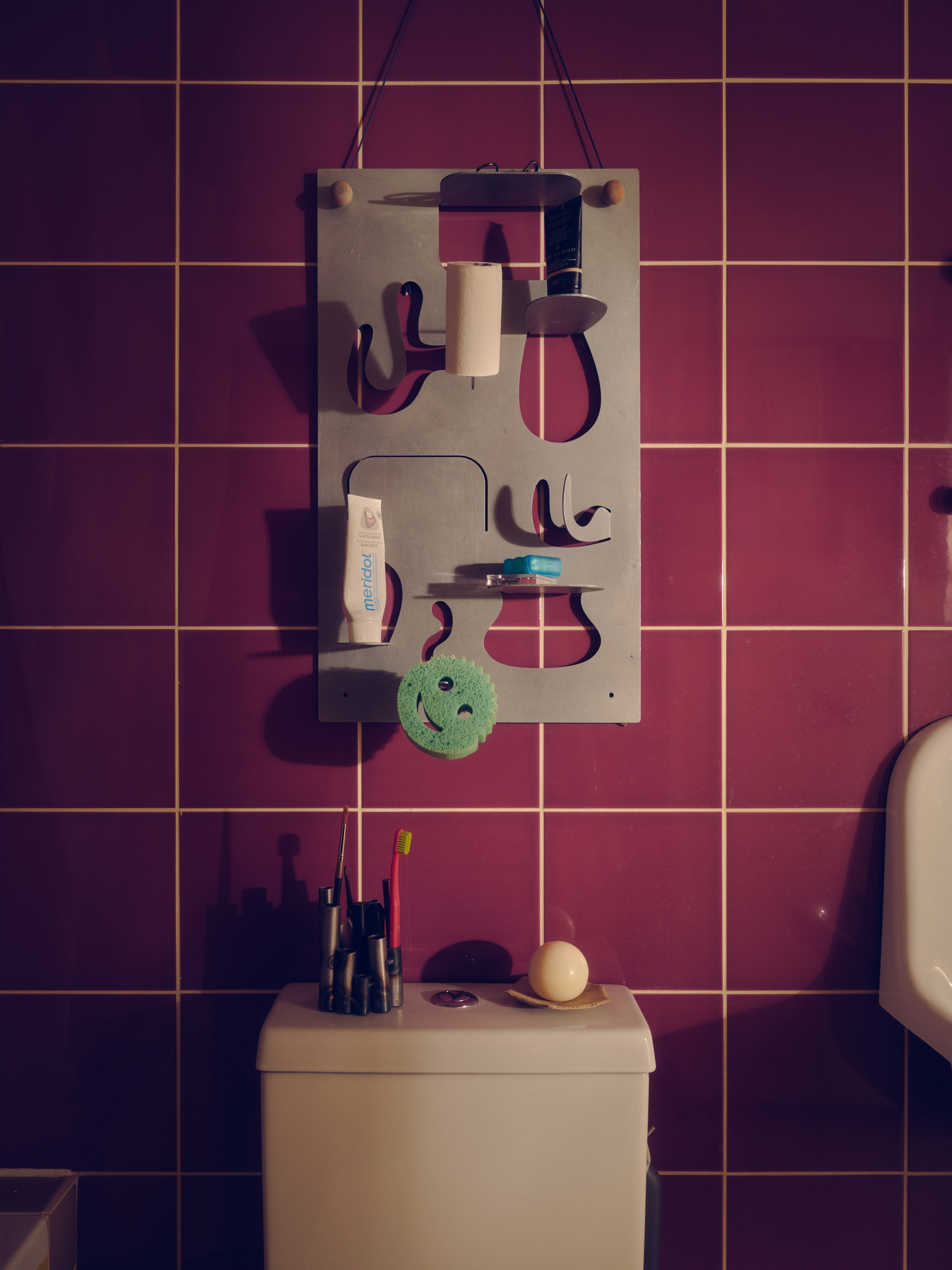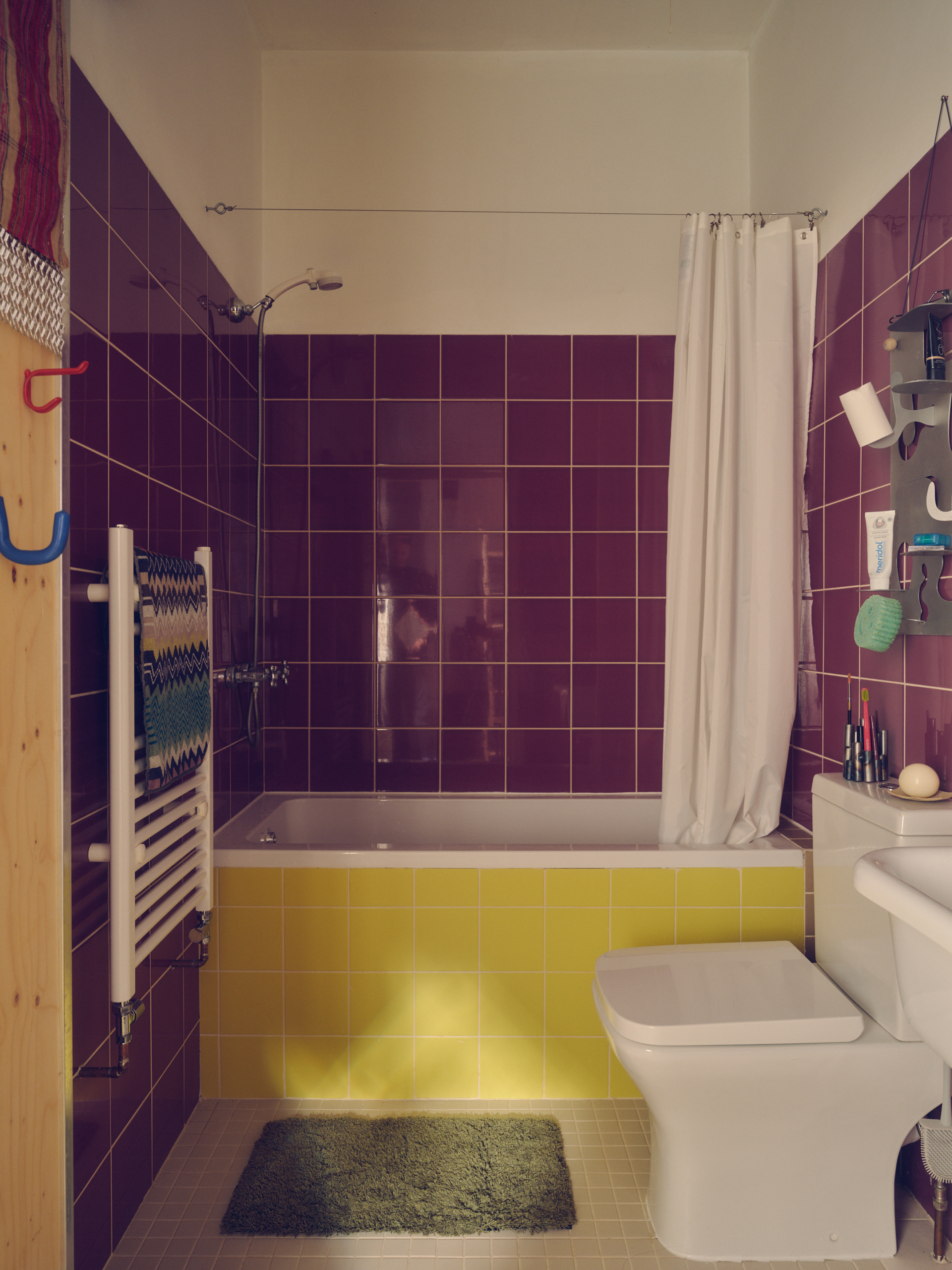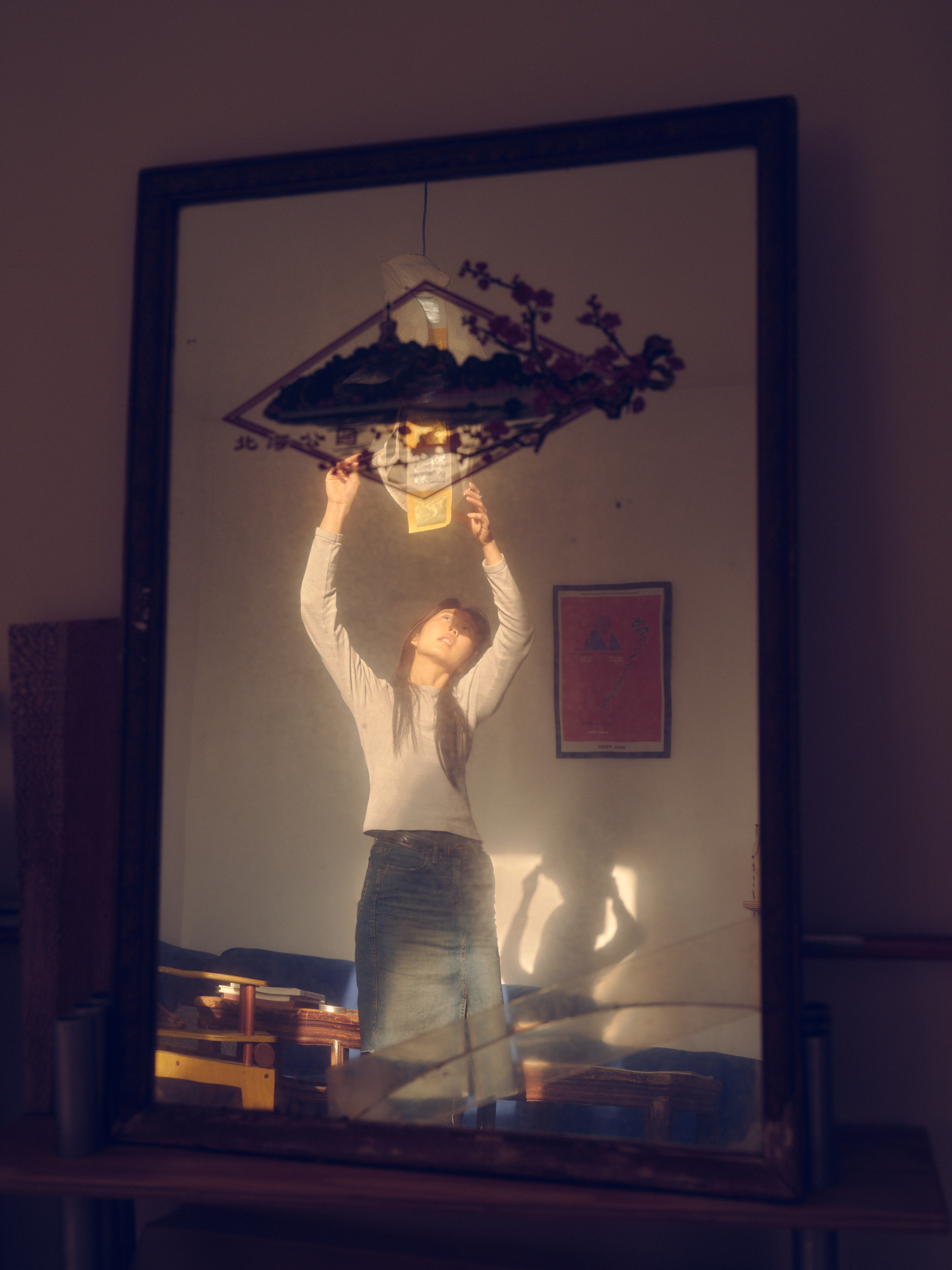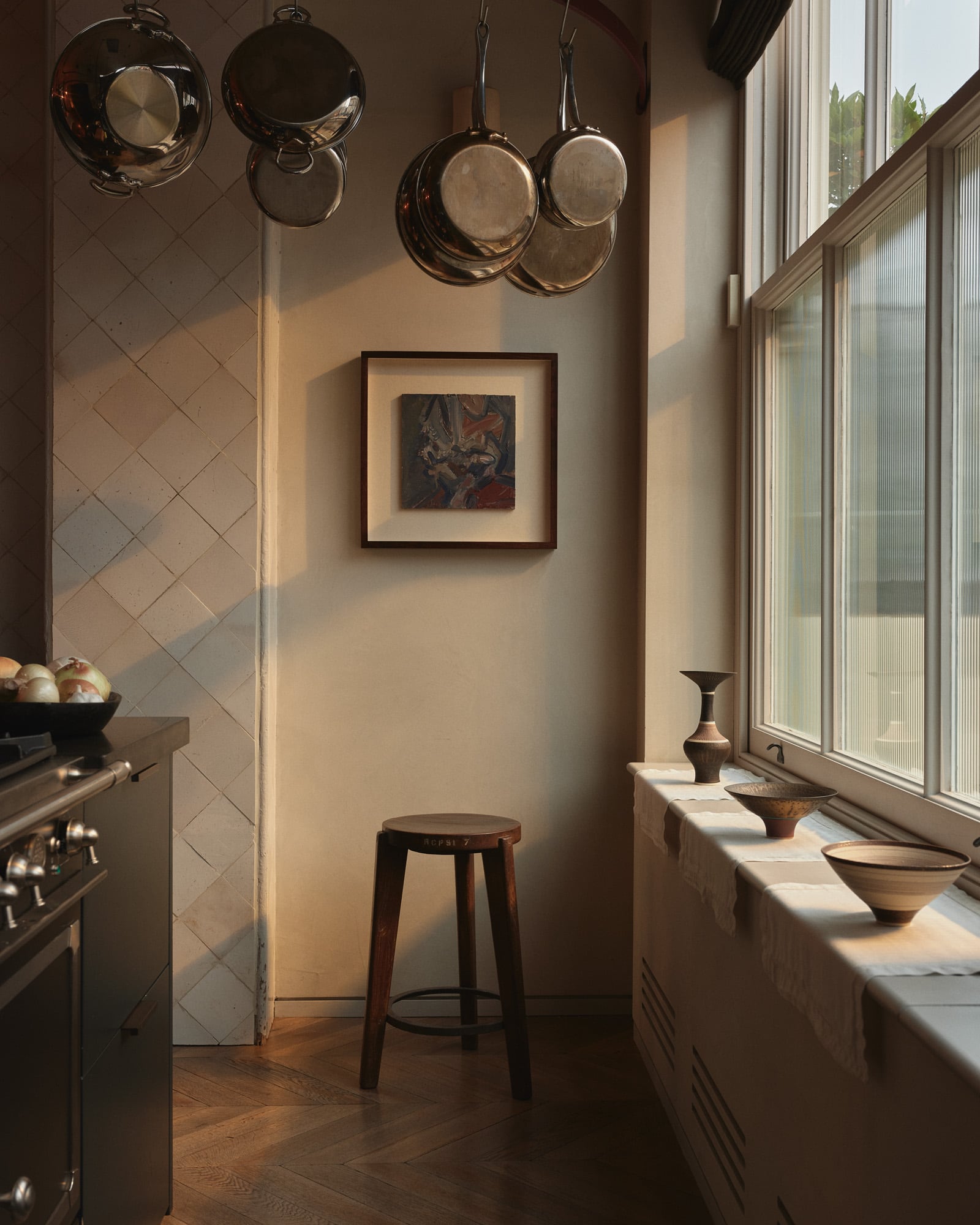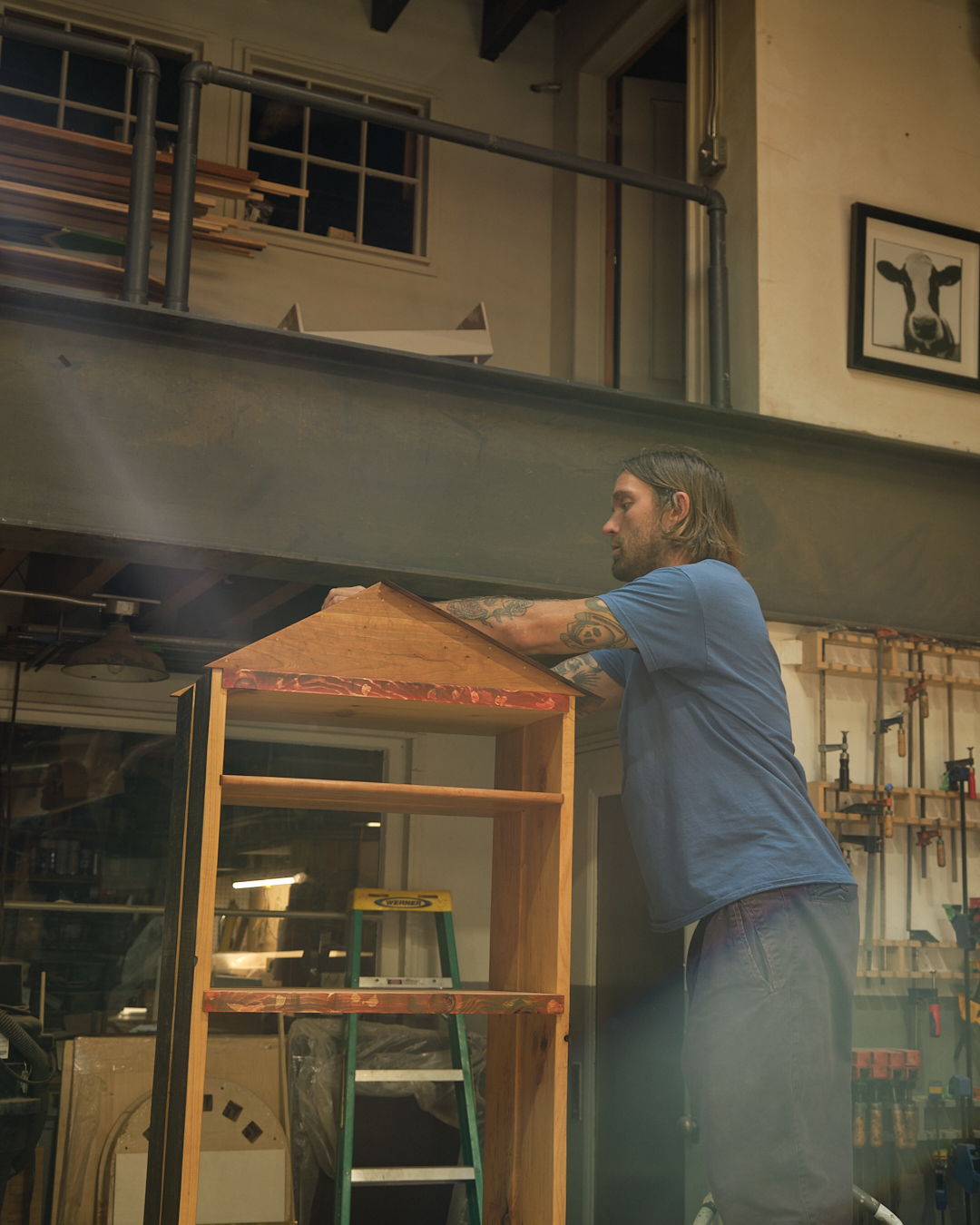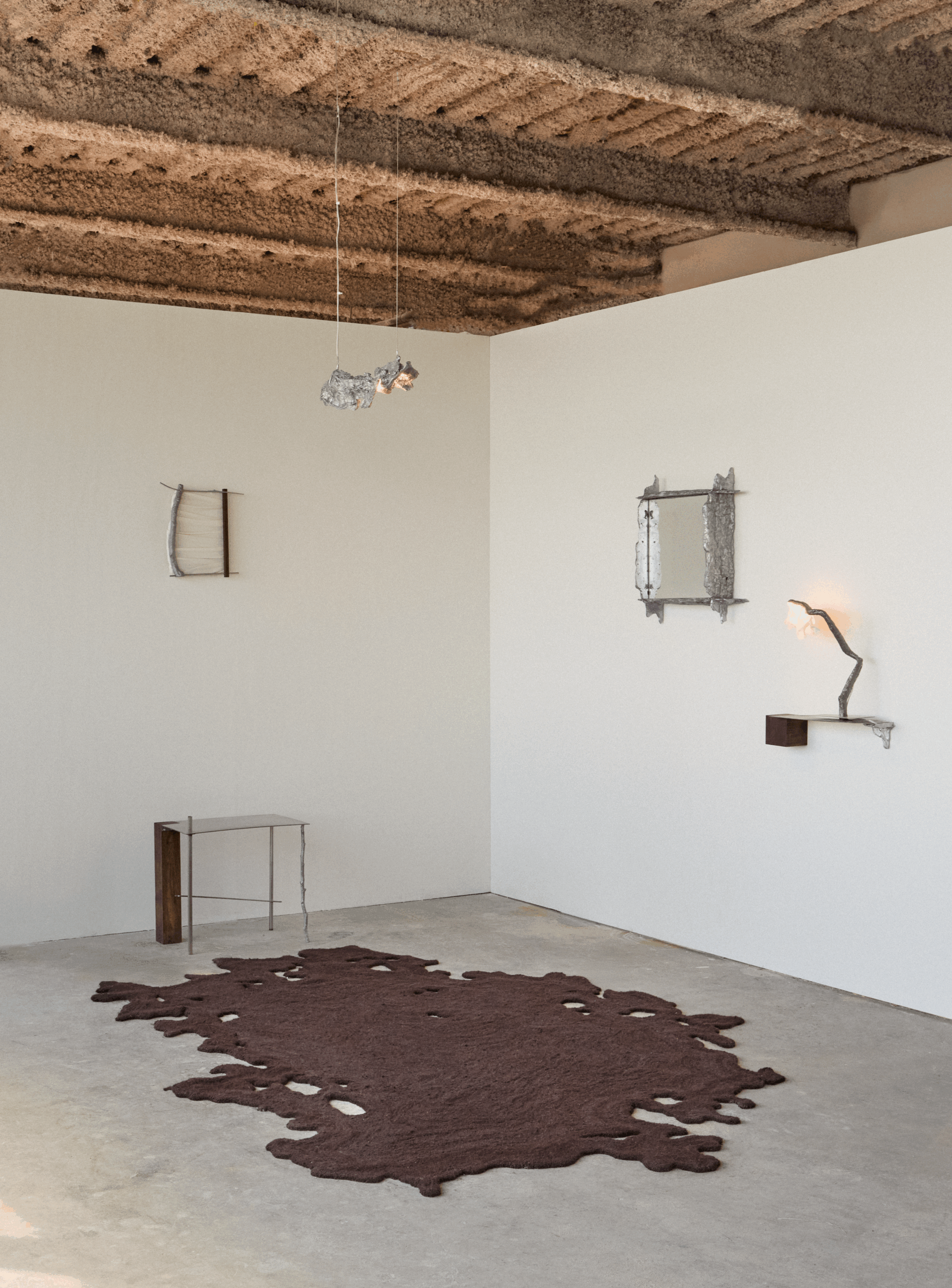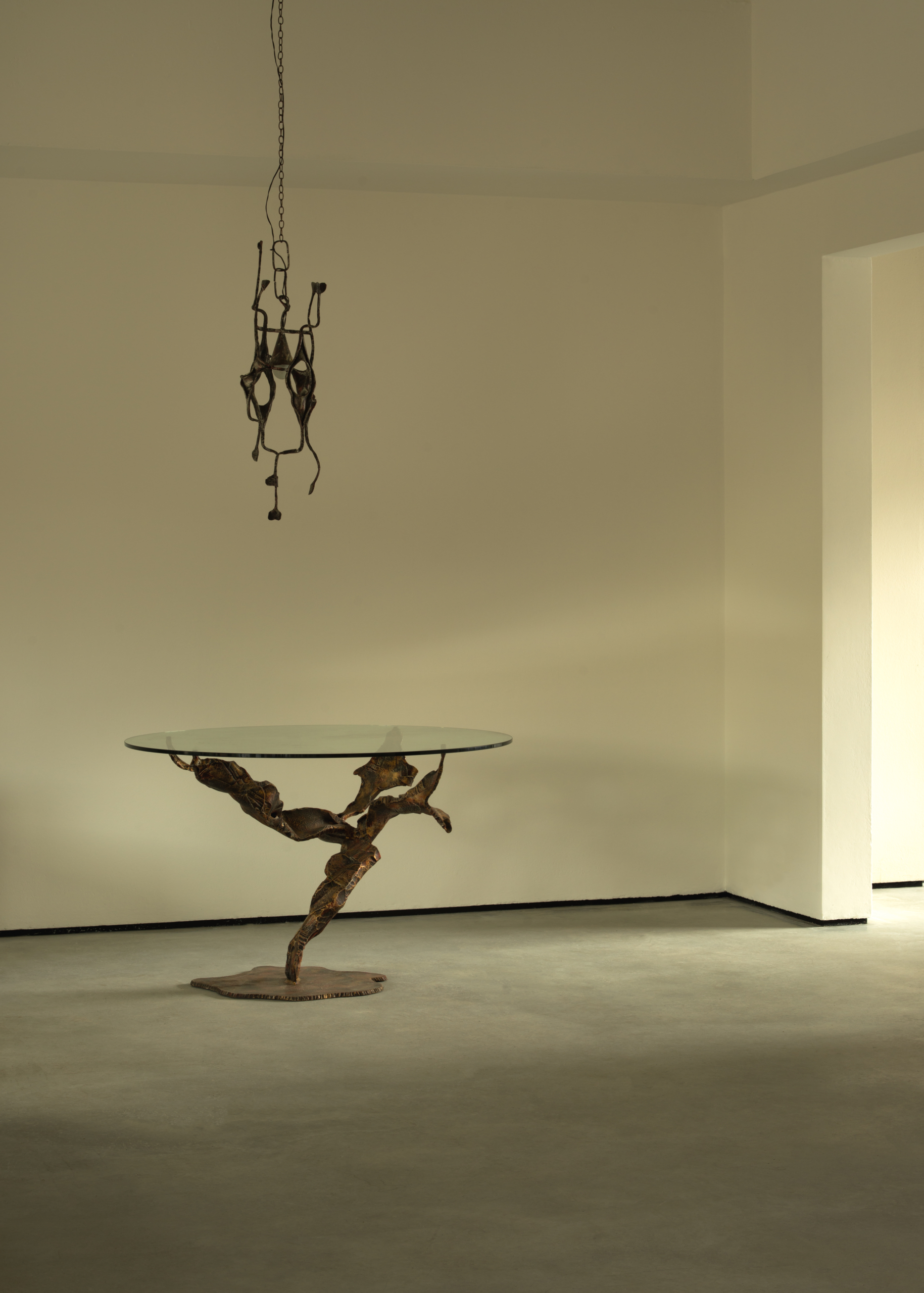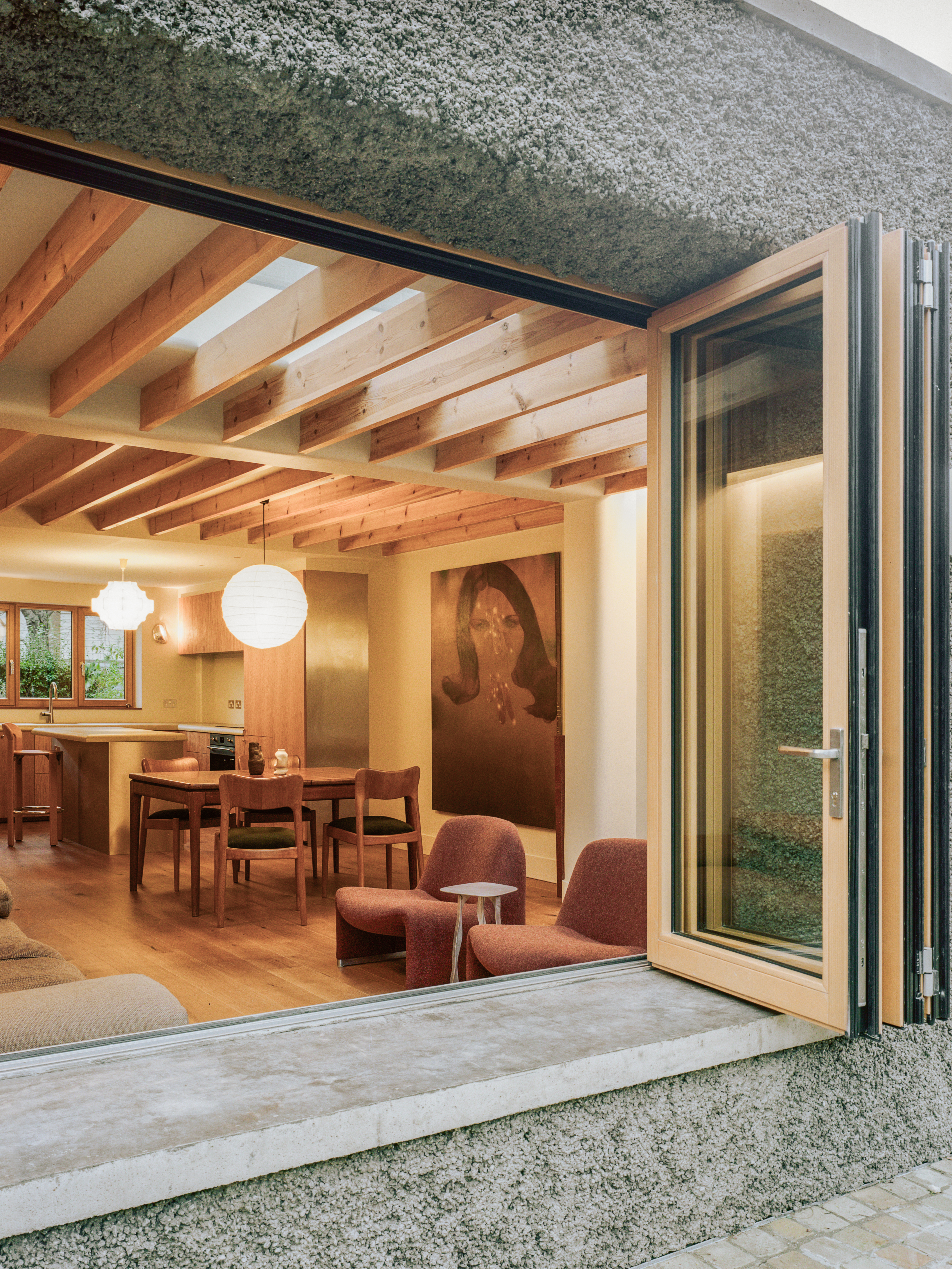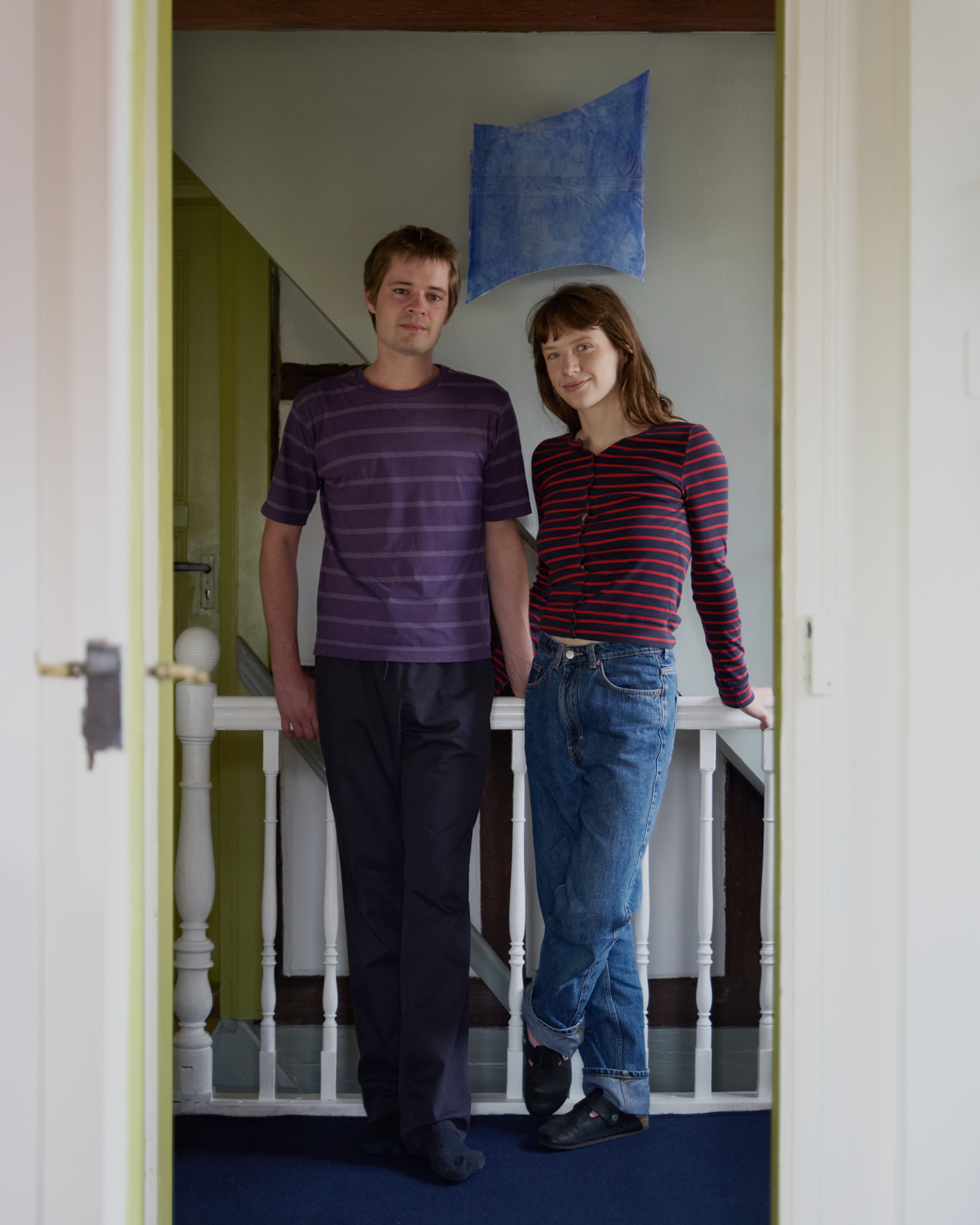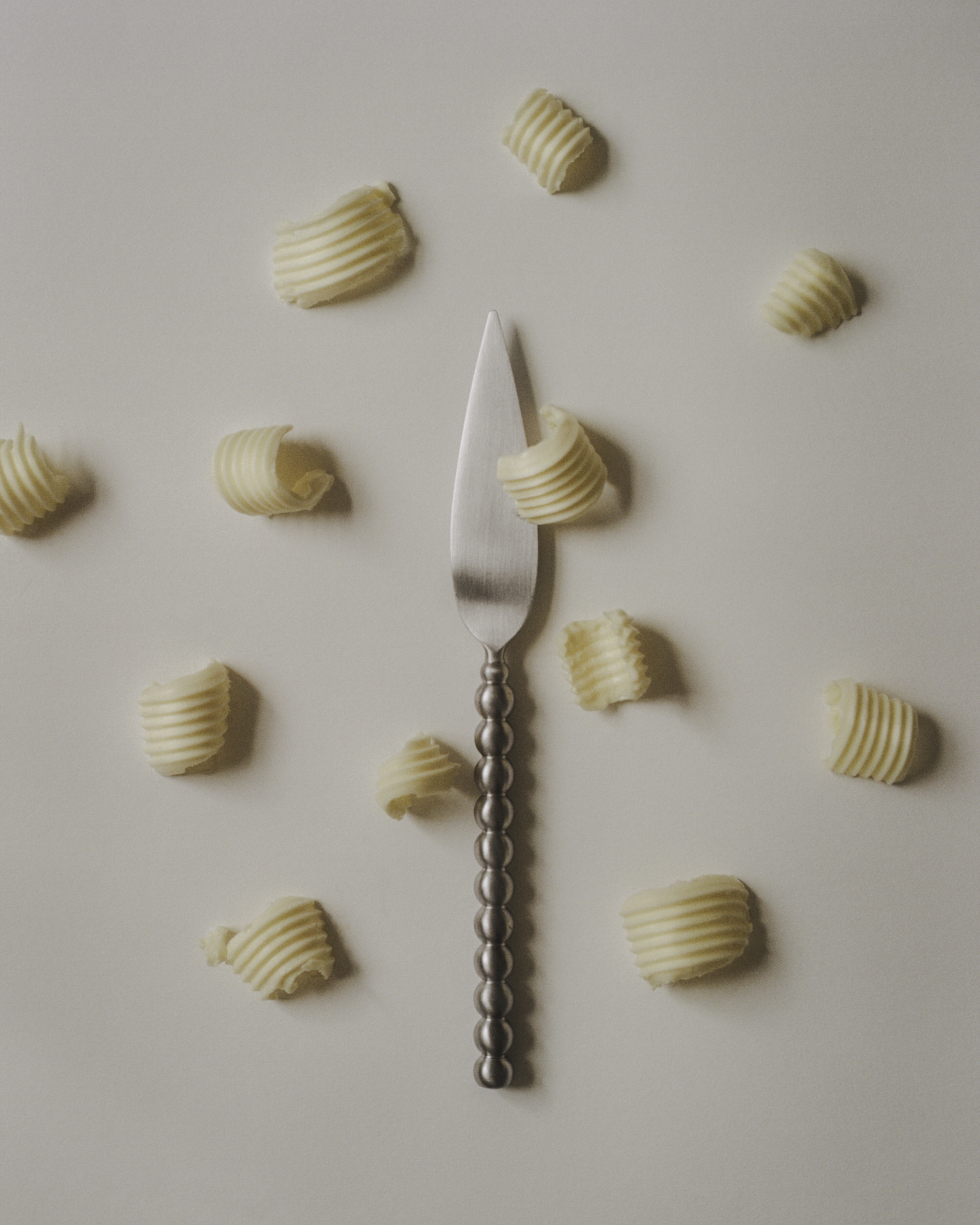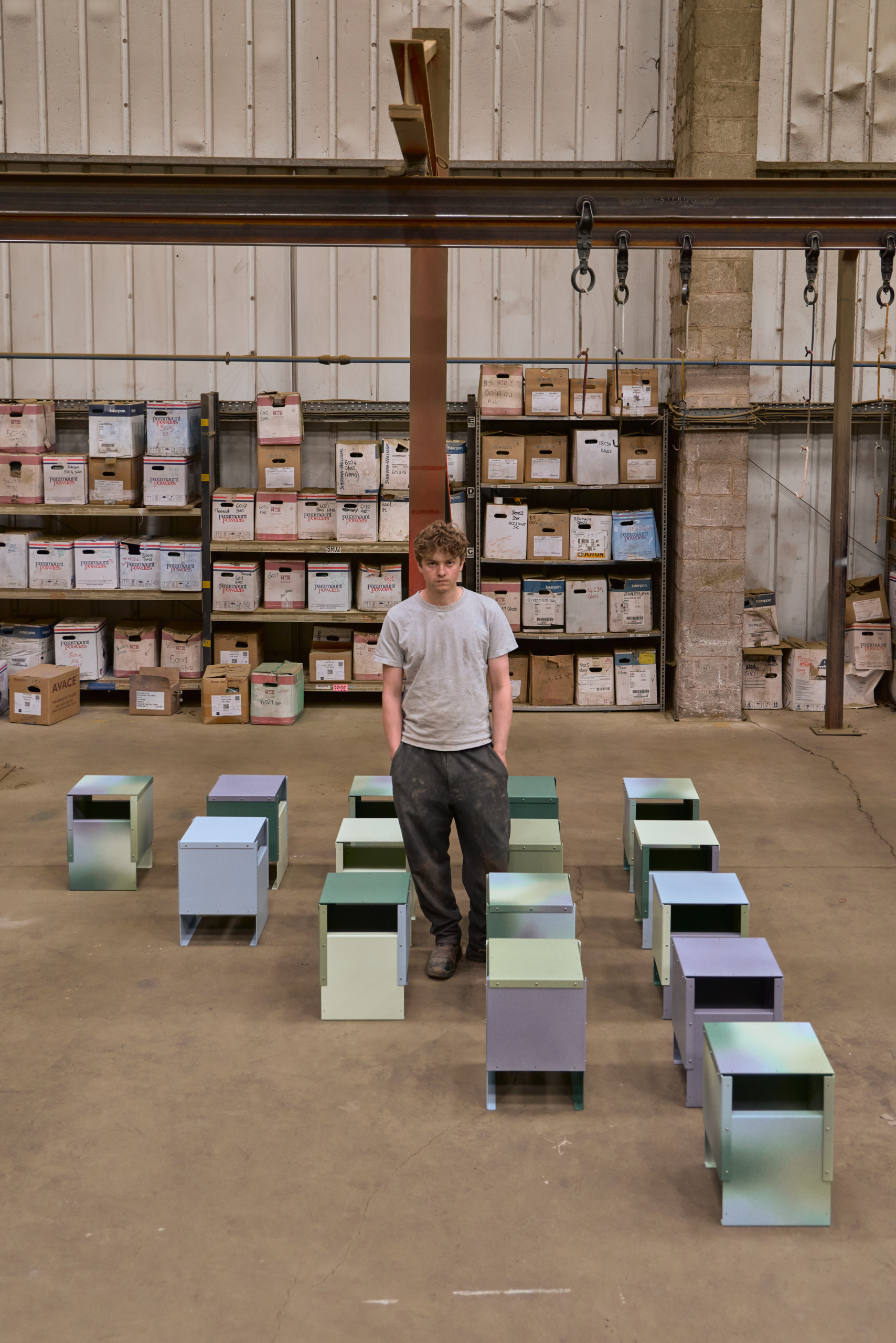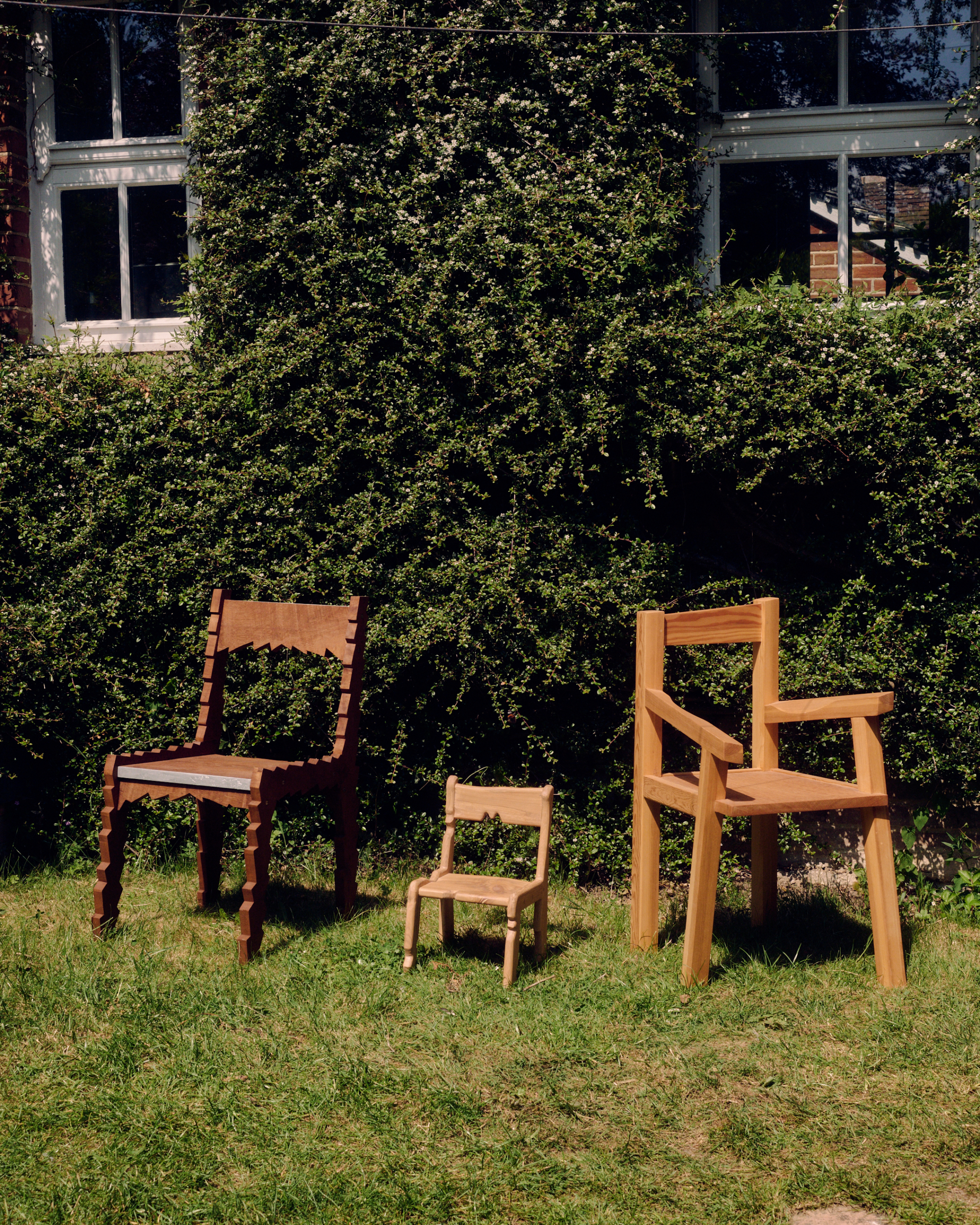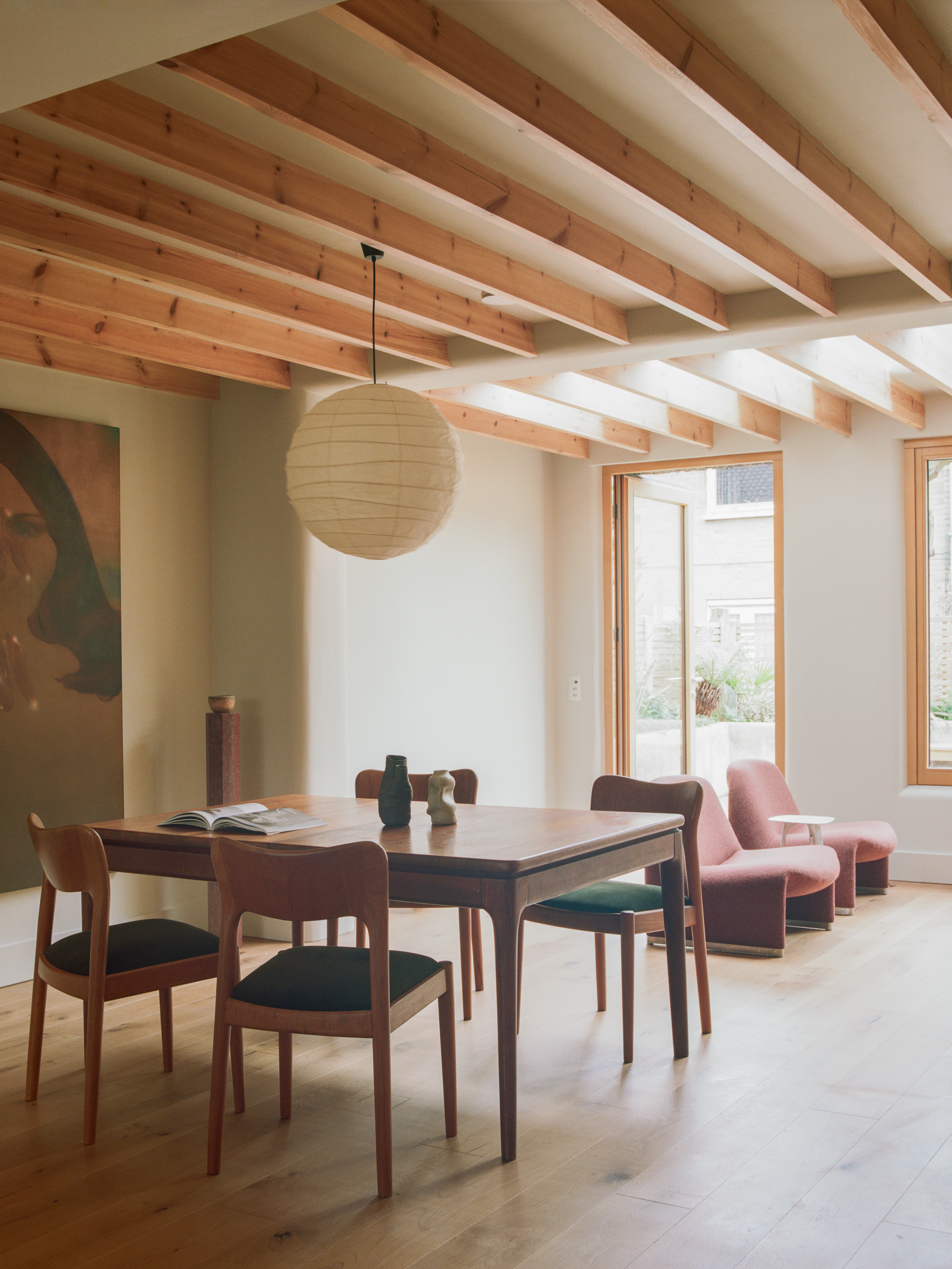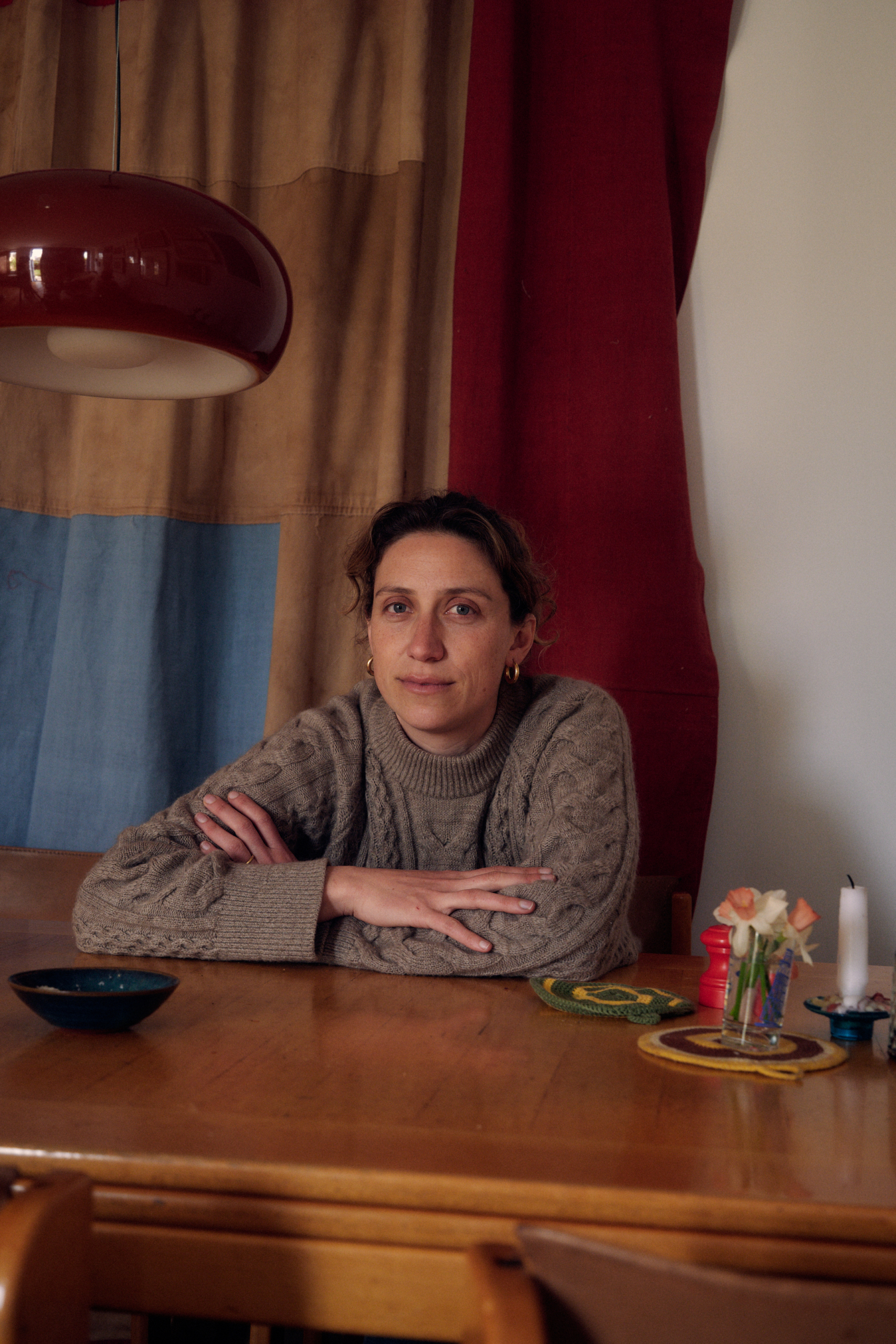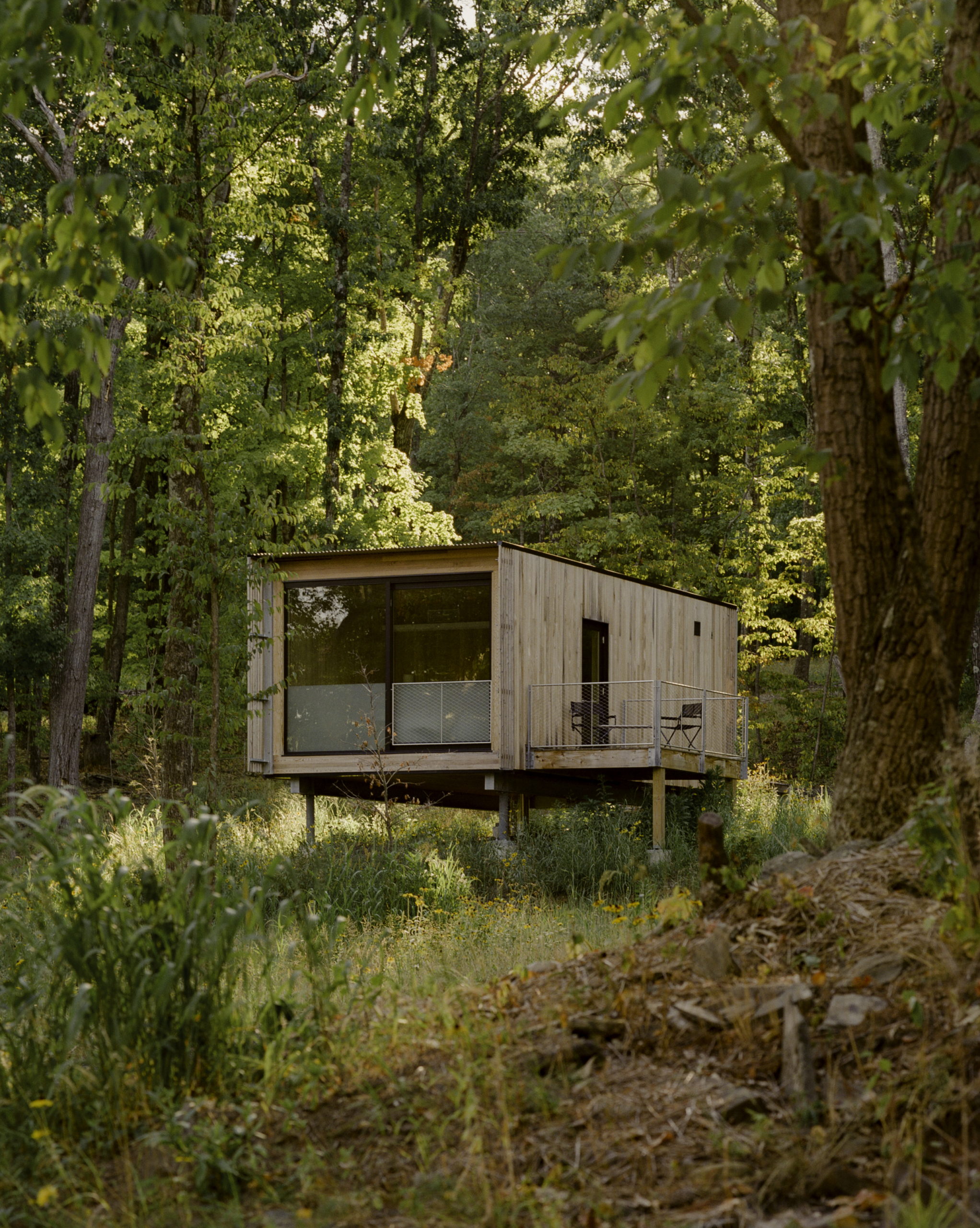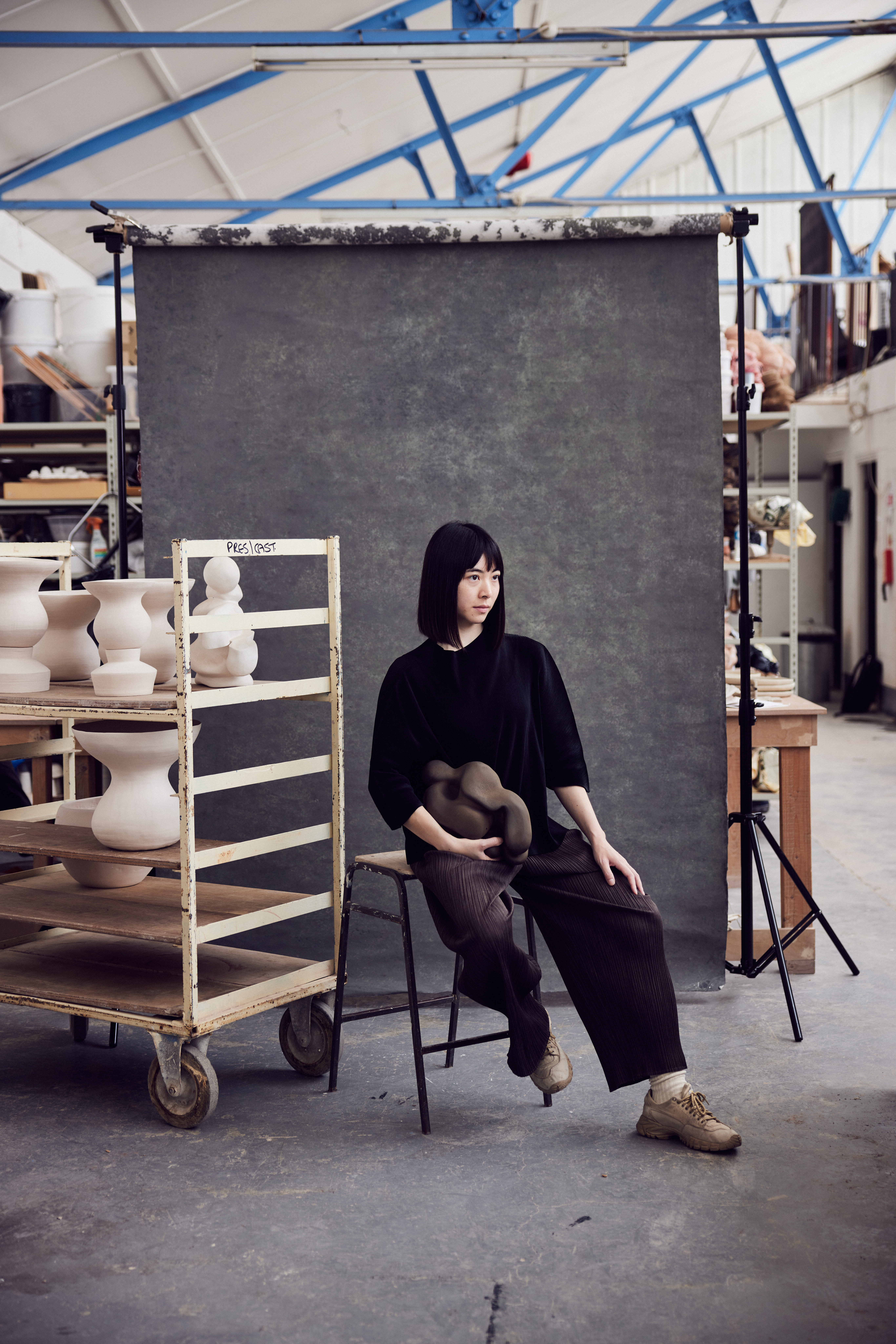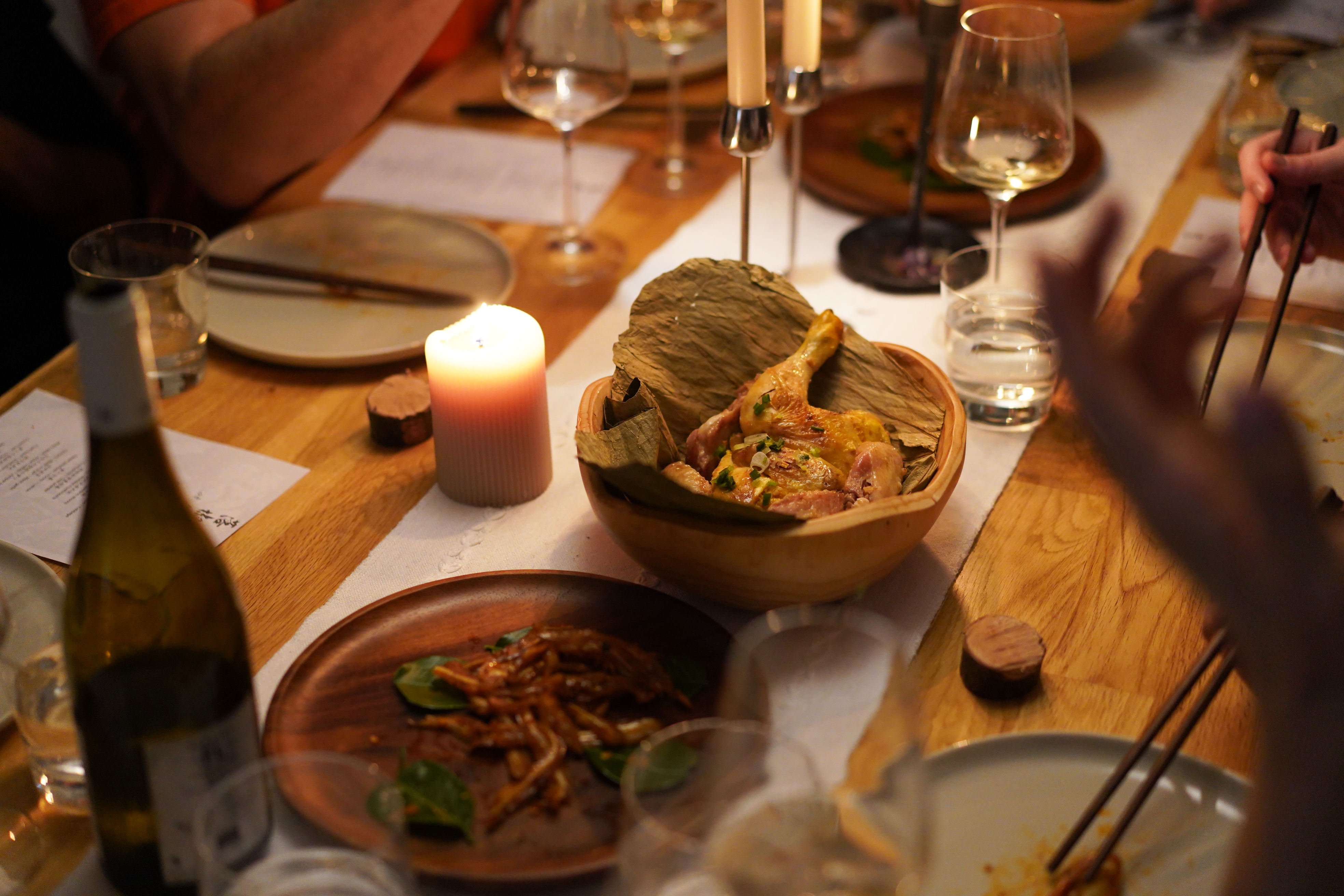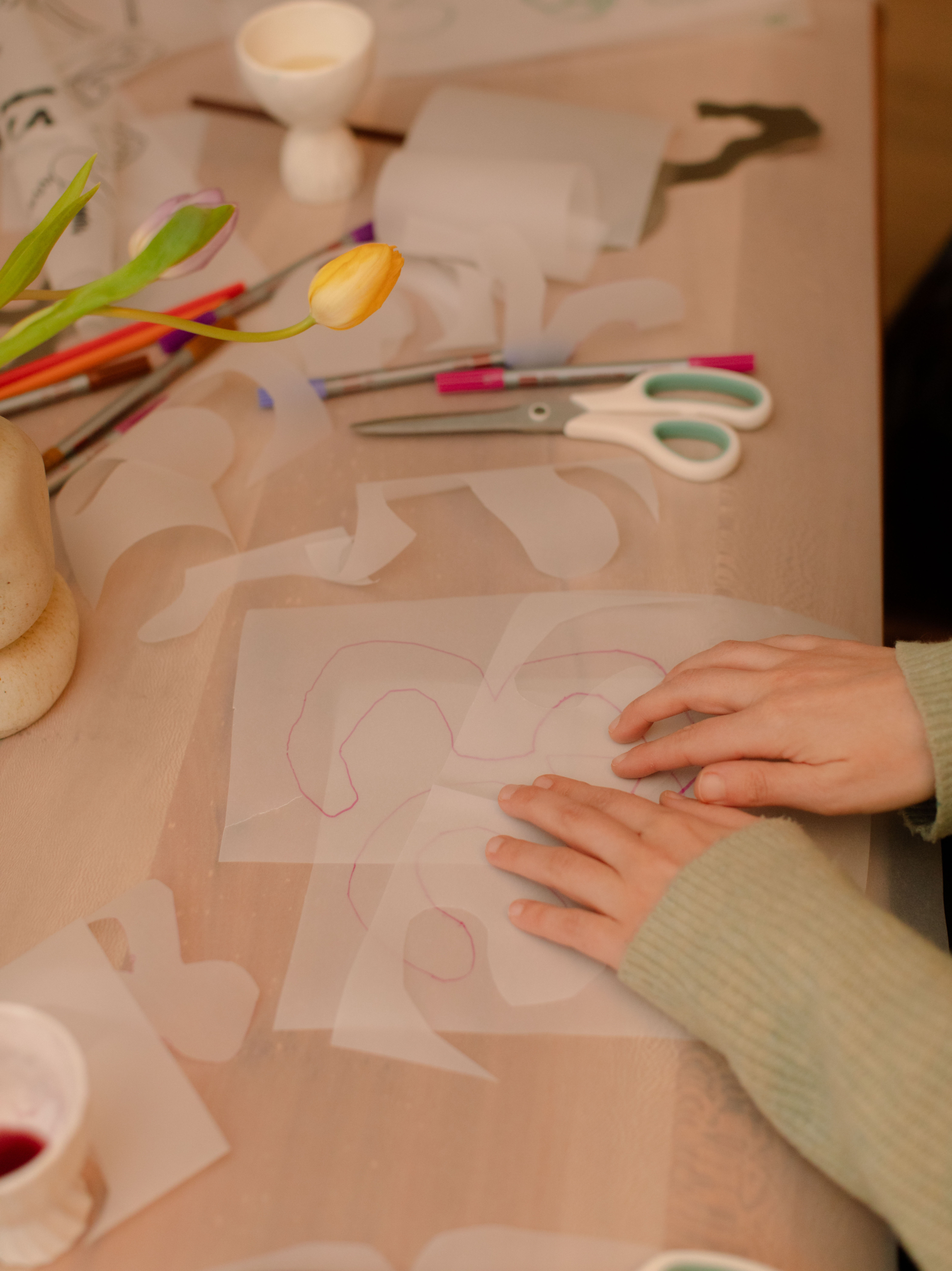Designer MO TONG’s Evolving Home and Practice
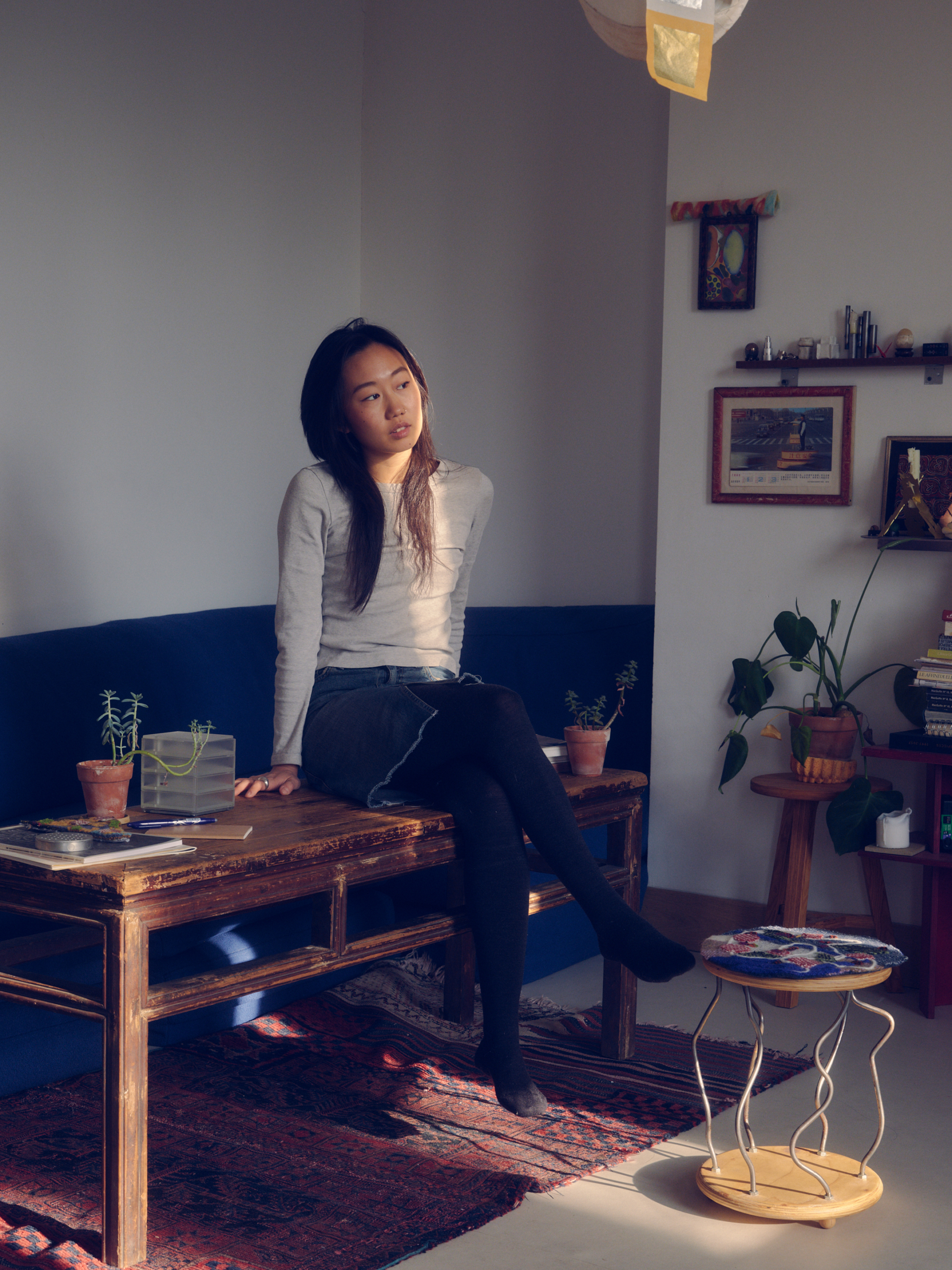
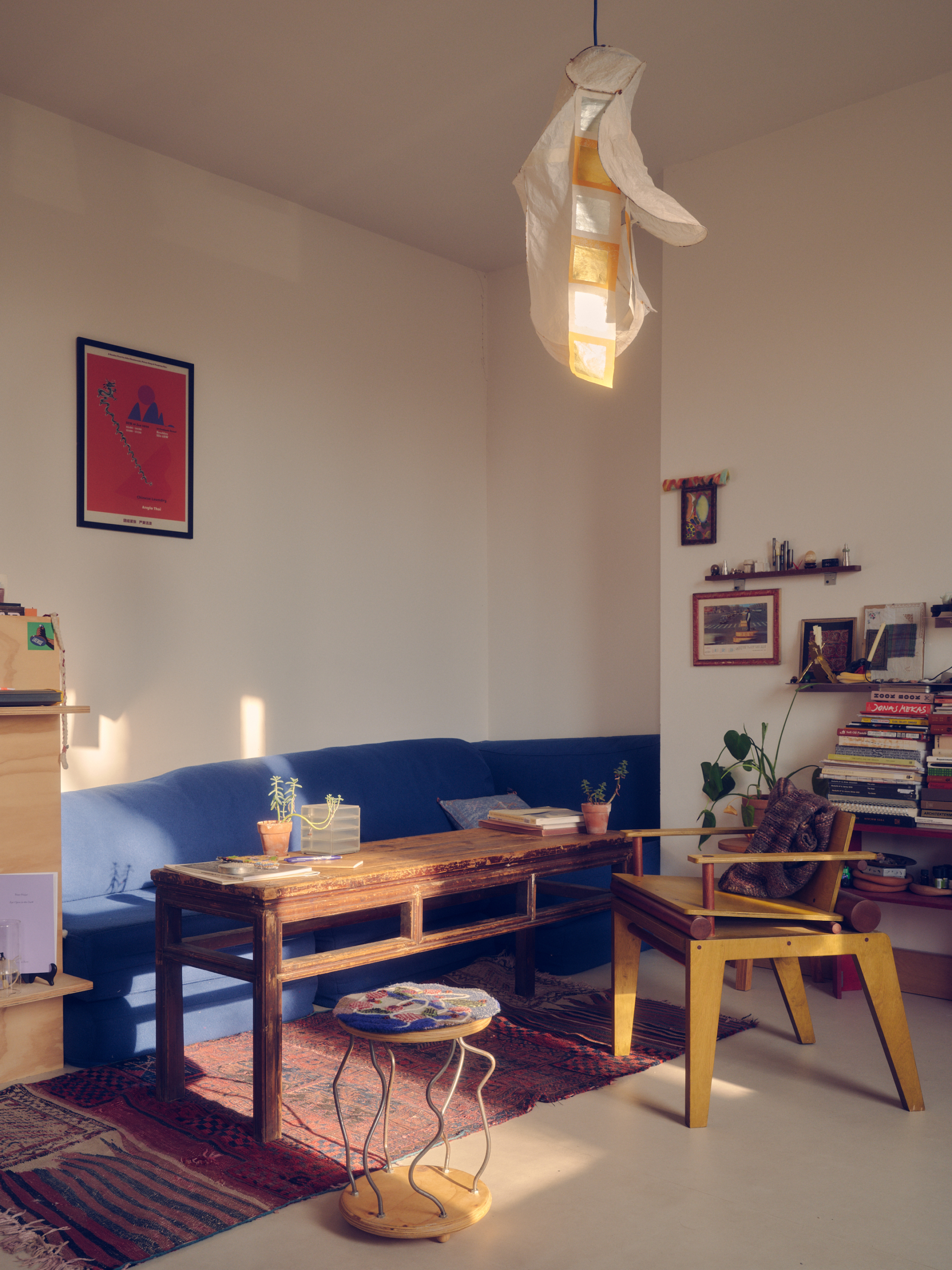
When it comes to shaping a home, some approach it with precision, creating spreadsheets and mood boards, assembling swatches and samples. Others allow it to unfold naturally, guided by instinct, necessity, and chance. Designer, maker and Flawk collaborator Motong Yang, based in Hackney, belongs firmly to the latter camp. “I built it in a way that’s like ‘Okay, now I need this, and then I made that thing,” she says, as if amused by her own process. “It’s very DIY, very assemblage in its nature.”
When she bought it at an online auction, the flat itself was hardly inviting: the upper floor of a large Victorian house that had been converted into a tangle of tight, poorly lit spaces covered in brick effect wallpaper that made the whole place feel heavy and dark. She hadn’t intended to buy that day, clicking the bid button almost on impulse. “Every click was more and more money,” she recalls. “It was super stressful.” But the purchase was made, and with it, a chance to reshape the space entirely.
The first step? Knocking down a wall that once boxed in the kitchen. “It made no sense to have the large living space at the front divided into two narrow strips with no light going between the two,” she explains. With the wall gone, the layout became open with possibilities. A blank slate.


Today, two years later, Motong’s home is less a finished project and more an evolving composition, with pieces and refurbishments made through a fluid process driven by necessity, collaboration and experimentation. The plywood shelves in the kitchen? “I made them to make the most out of the recessed space from the waste pipe corner and celebrate the empty wall.” The chromatic powder-coated splash back? “My friend Tom Golland did that for me – I love how he used leftover powders from his workshop and how the colours change constantly with the light .” Even the floorboards – narrow, grooved, bearing the marks of old nails – have been reclaimed from elsewhere. “I like that they’re all different,” she says. “You can see the history in them.”
The kitchen is a simple, flexible construction: “Instead of having rigid and bulky cabinet units, I only used vertical panels to support the countertop, and I have trolleys as storage hidden behind the curtains.” Meanwhile, the three shelves in the living room were made after Motong completed her BA at the Bartlett: “They are more like the very initial exercises I carried out in making functional objects. I spent the whole summer at B-made – the Bartlett workshop – and just learned the basics on how to join pieces of wood and metal together. It was one of my best summers, receiving help and patience from the technicians who shared so much of their knowledge of tools, materials and, most importantly, their passion for making.”
When pressed to describe her home in three words, Motong opts for “harmony, ad-hoc, adaptive.” And it is exactly that: a loose, layered arrangement of materials, textures, and objects, mixed without worry: a snuff bottle with an unintended transparency from a kiln error found in a Chinese market; a collapsible metal basket, bought at a Tokyo flea market, its form both practical and charming. She loves the process of digging through a pile of potential treasures at markets, unearthing something special and restoring its significance by letting it shine again. Objects also arrive – through friends, through travel, through sheer happenstance. “I don’t like living with generic things,” she says. “Everything here, I know where it comes from.”
More than this, for Motong, the act of caring about the items we live with is connected to ideas about respect and restraint: “I think we should develop feelings for all the things we use and occupy, because we really don’t need that many. And, in my opinion, by having this emotional connection with objects, all the issues on waste, sustainability and consumerism will tune down automatically. It comes from caring.”
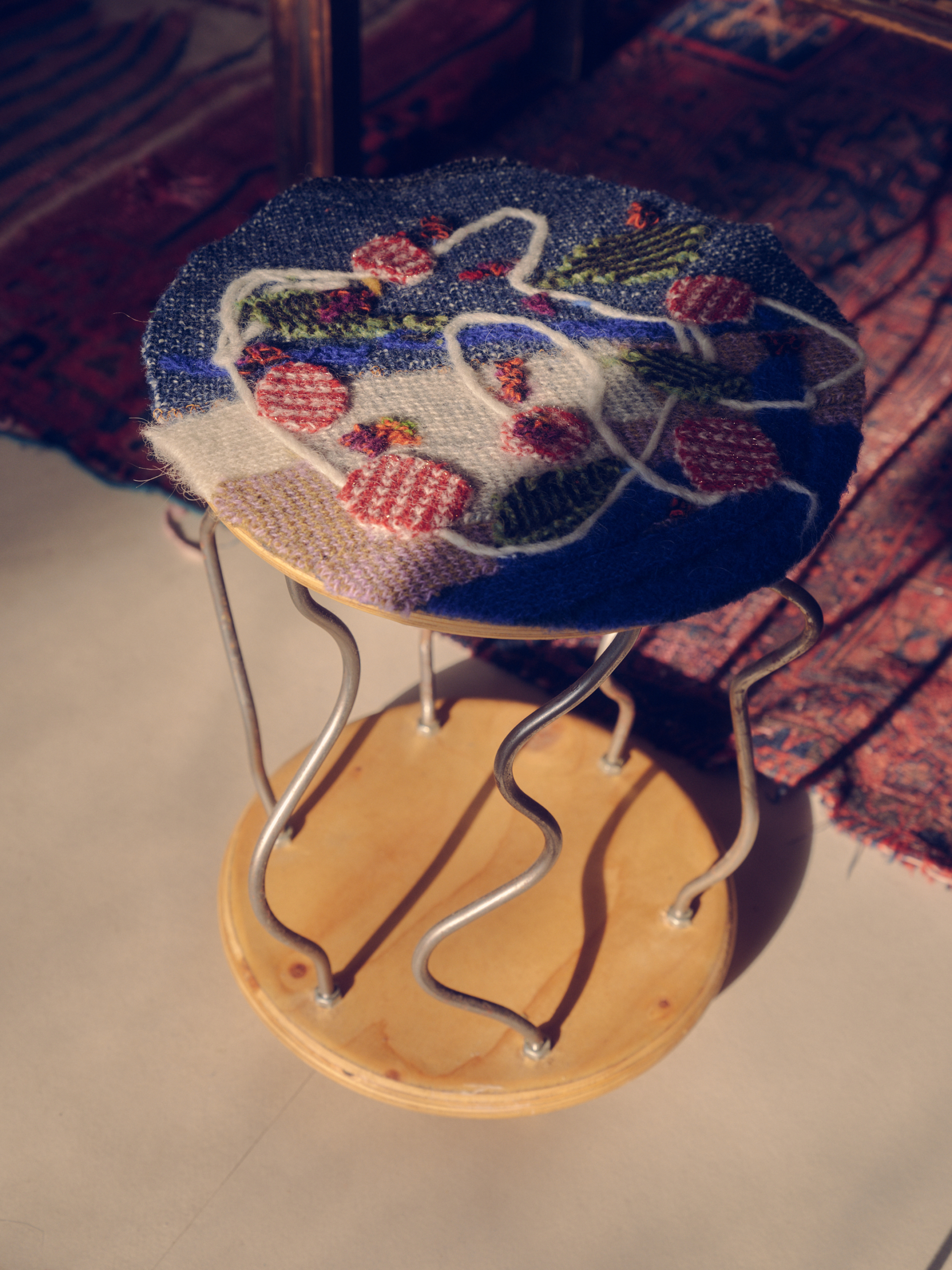
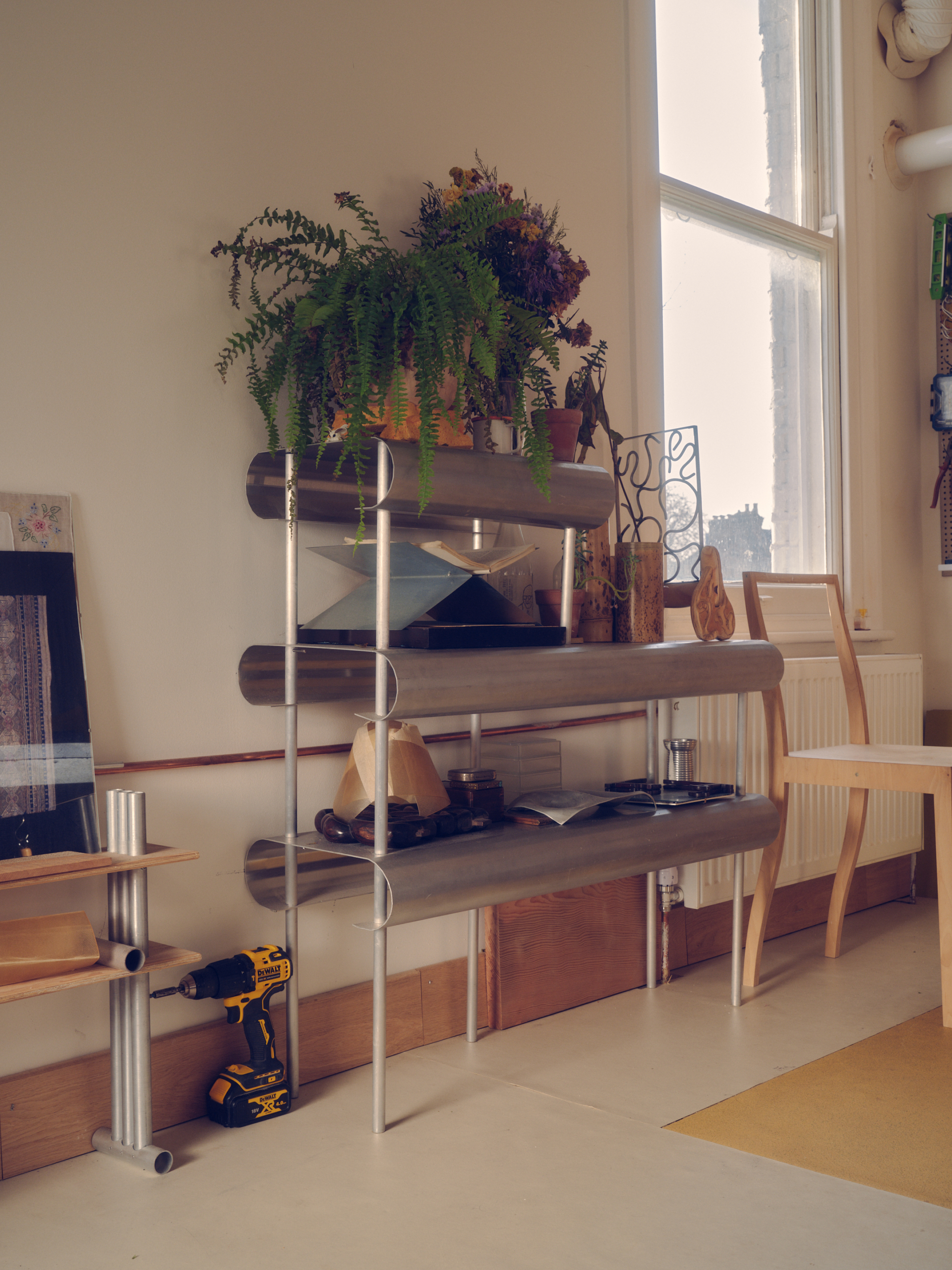
When it comes to work and home life, there is no strict separation. Many of the objects in the house are the byproducts of creative exploration – exercises in new techniques, repurposed parts of past projects. “Nothing here is really finished,” she admits. The house, like her practice, is a continuous process. Take, for example, the curtains in her bedroom, a colourful patchwork of old Kvadrat fabric samples she saved from the going in the bin, then stitched together herself: “I love thinking, ‘What can it be? What else can it be?’ and making something new and useful”. Also in her bedroom, a prototype of a bedside table that Motong developed for Lode, Flawk’s latest project in Stoke Newington, which, with one of its legs doubling as a lamp, seeks to dissolve the boundaries of functionality and decoration so they are one.
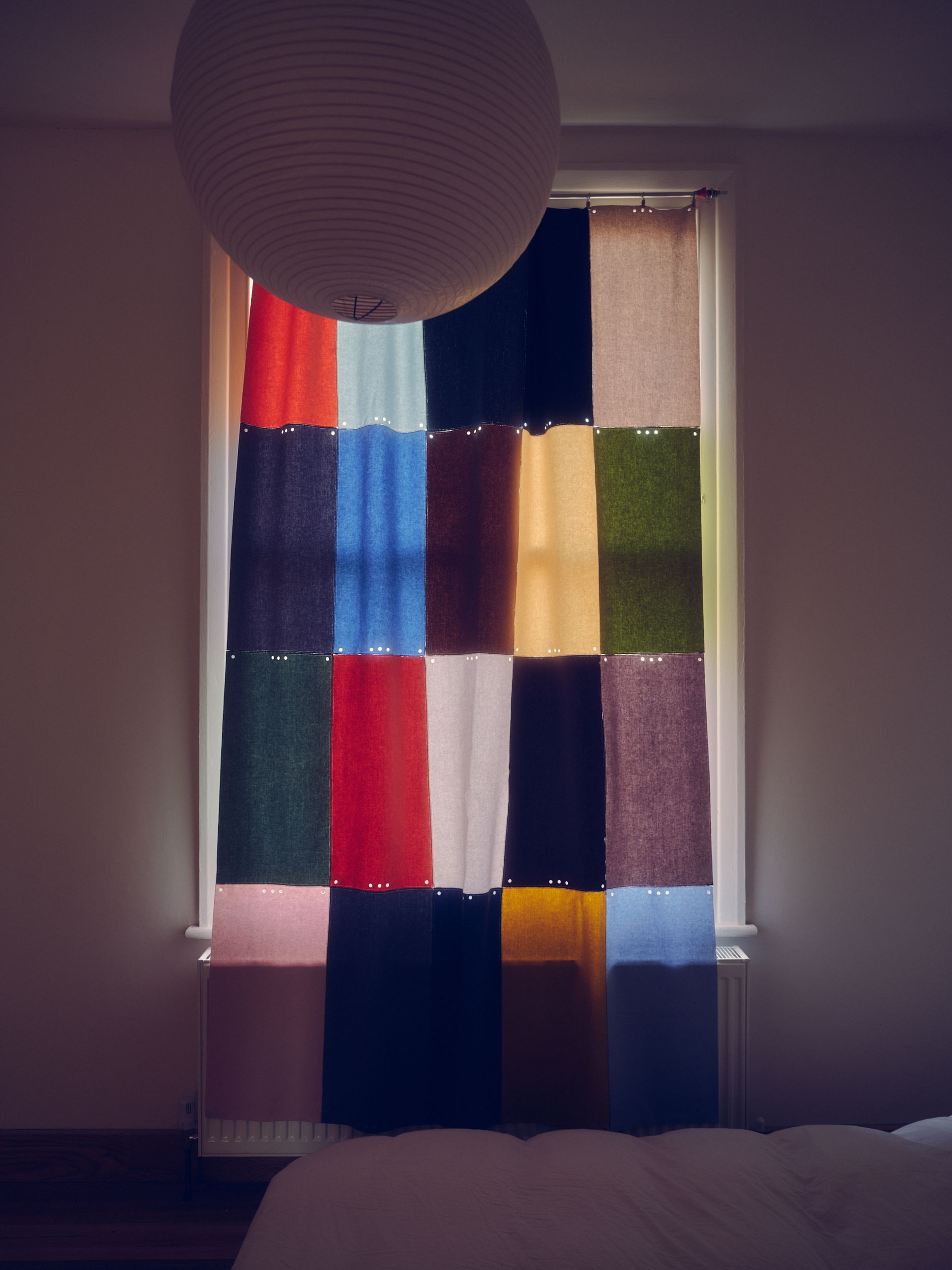
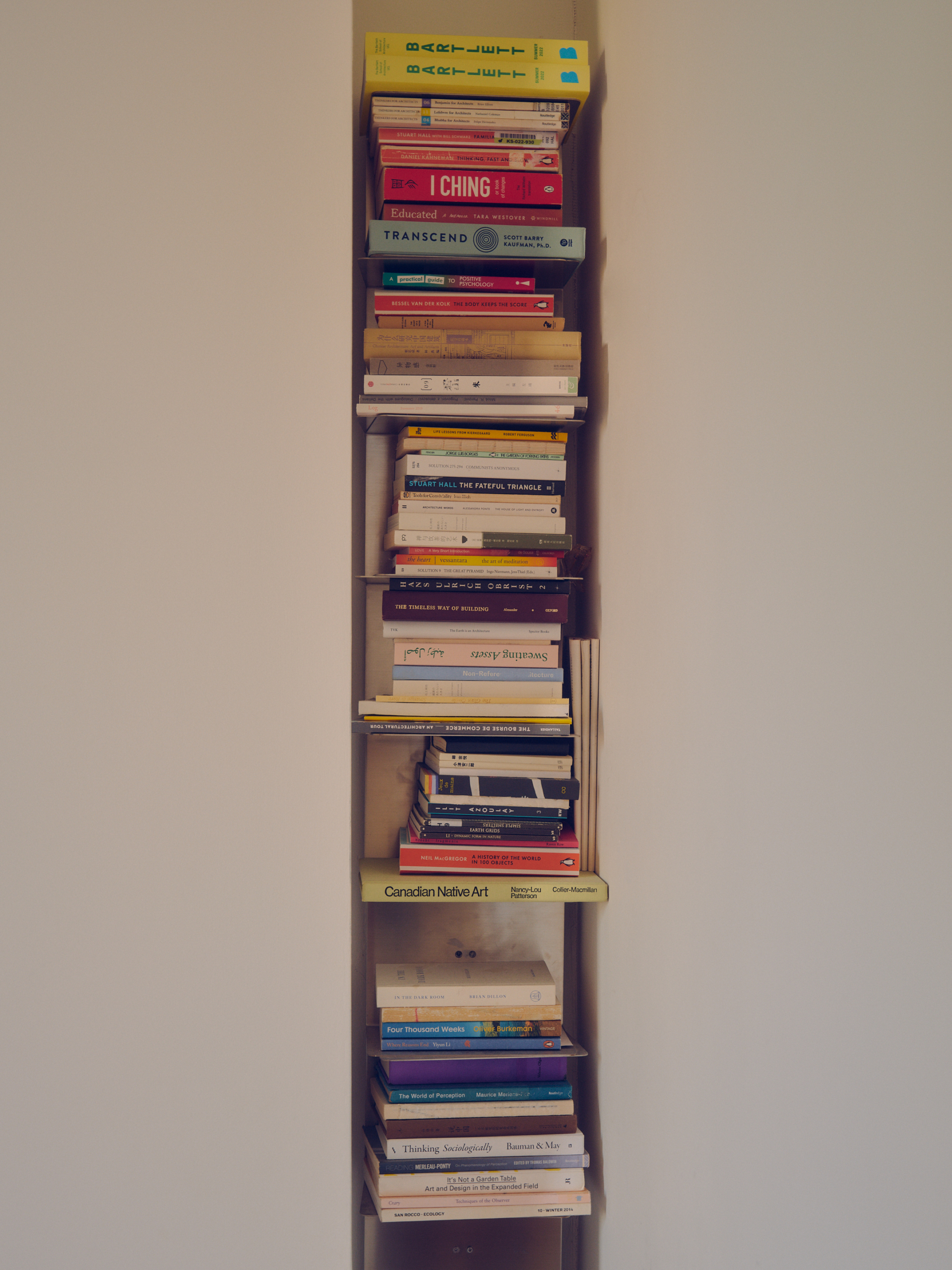
Motong values function, but never at the expense of character. As she prepares tea using leaves from the Jingmai Mountain region in southeast China – known for its wild ancient tea trees – and a decorative teapot made by a family of makers in their tiny at-home studio, she explains, “I love folk objects. They are the things that people who make objects actually use, and they’re the most humble and honest and useful objects ever.” This ethos comes alive in her admiration for Ming Dynasty furniture, which she opens a book about and explains that pieces of that time even had brackets and hinges that were carved with a simple elegance. “I love that they were pieces made by those who needed them, practical and unfussy, but still highly detailed and beautiful,” she says.
Motong respects the older generation carpenters who knew their tools and the wood so well, they were able to push the materials to behave exceptionally well: “Truly beautiful objects are not just forms. They are forms that make sense to the structures and support each other — ornaments and functions should never be divided. They’re like the bones that support the skin.”
This interplay is also evident in her photography project, ‘Non-essential Necessities,’ a visual exploration of the concept of functionality. “My photographs are documentations of these seemingly random arrangements of objects,” she explains. “They are unnoticeably occupying essential situations of everyday life, and the notion of ‘functionality’ extends beyond actual usage, presenting the decisions between objects and materials in particular spectacles.” She goes on to add, “I’m interested in how people interact with their surroundings and material culture – and the material culture behind these temporary artefacts.”
Despite the thought put into every decision, nothing in this space is too precious. If something doesn’t work, it changes. If something doesn’t clean up well – like the thick white paint that once coated the staircase – it gets knocked off in frustration. “I don’t have patience,” she laughs. “I’m trying to have more.”
For all its improvisation, the house feels unmistakably hers, built not just from materials, but from relationships, instincts, and chance. “It’s not about making it perfect,” she says, “but making it work.” And when she returned recently from Switzerland, where she is studying for a master’s in product design, she realised she had, in fact, made a home. “I walked in, and I felt so relaxed, just by being here,” she says. “It feels so grounded and natural. I wasn’t thinking about what I needed to do. I just existed.”
